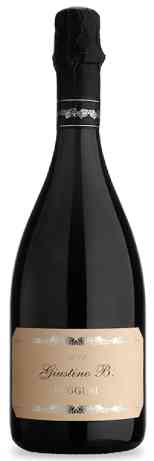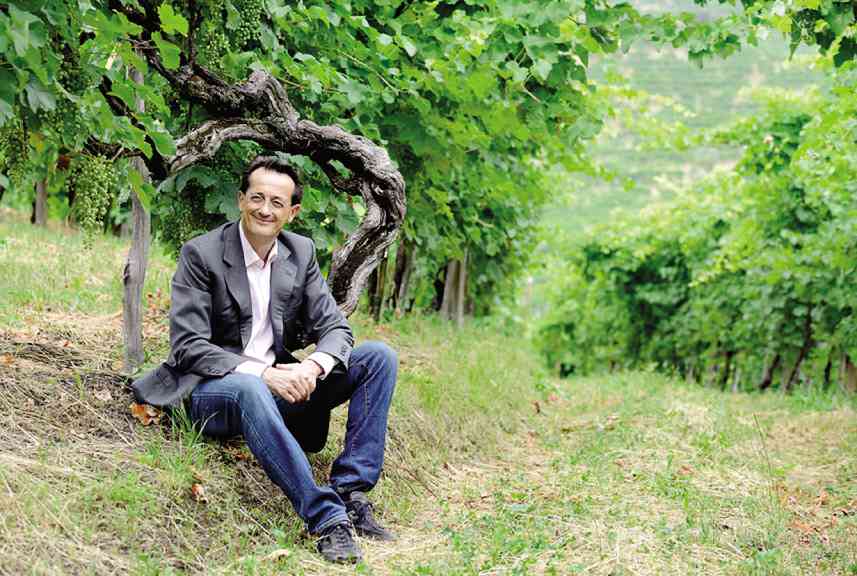A Prosecco to remember
“Pink champagne … that’s the kind of life we’ve both been used to. It might be a little difficult … do you like beer?” asked an anxious yet smitten Terry McKay, played by Deborah Kerr, to French playboy Michel Marnet, played by Cary Grant.
The lady on the boat, in the midst of their Affair to Remember, realized she was going to choose love over luxury.
Had she been acquainted with Paolo Bisol, owner of Ruggeri wines, she would know that they wouldn’t have to settle on beer. The best alternative to champagne that is easy on the pocket, yet still elegant on the palate, is an Italian sparkling wine called Prosecco.
Champagne vs Prosecco
Champagne, as you may know, is a sparkling wine from the Champagne region of France. It can only be called champagne if it was made in this region using the following three grapes in any combination: Chardonnay, Pinot Noir and Pinot Meunier. Good champagnes are described to have almond-like flavors along with orange-zest and white cherry.
Article continues after this advertisementProsecco, on the other hand, is an Italian wine, made in the Veneto region of Italy, near Venice. It is made using a grape called Glera which, until 2009, was called Prosecco, after the village where the grape supposedly originated.
Article continues after this advertisementChampagne is expensive because it is perceived to come from a region of luxury wines, whereas the market is not used to paying a lot for a bottle of Prosecco. But there is another reason for the high prices of champagne other than impressions: the method employed in producing this bubbly.
Creating bubblies
Creating a bubbly isn’t an easy task, apparently. So champagne producers employ a costly practice called the “traditional method.” To create the bubbles, wines are fermented twice: first in a wooden barrel, to turn grape juice into wine; and then in the bottle you buy it in, to give the wine bubbles.
But it is what happens after the second fermentation that is most challenging: separating the lees—or the solids leftover from fermentation—from the wine without losing the bubbles that have been trapped in the bottle as a result of the second fermentation.
The slower and sophisticated wine-making process is what makes champagne expensive.
In fact, champagne’s “Methode Champenoise” requires an extra mile: Non-vintage varietals must be aged “on the lees,” or in the bottle, for at least 15 months. The champagne is kept in the bottle with the sediment that forms while being gradually turned and inverted until it is time for the lees or sediment to be removed. Meanwhile vintage champagne bottles must be aged in cellars for three years or more before “disgorgement,” or the removal of the lees, or solidified sediment, that gathers in the bottleneck. This results in its complex, toasty, biscuity aromas and flavors.
Prosecco, on the other hand—known for its fresh fruit aromas and flavors—requires a less tedious process.
The Italians employ the easier and quicker method called the “charmat” or tank method, to produce bubbles.
The two fermentation steps for Prosecco take place in a stainless steel vat. First, carbonation is effected from the decomposition of sugar from added yeasts. Then the grapes undergo a slow fermentation process in pressurized, stainless steel tanks or autoclaves. To achieve the proper aroma, elegance, consistency and balance of flavor, the wine is kept in these tanks from 20 days to 3 months, and can go up to 6 months for Cuveè and Prestige.
Just Like champagne
But it doesn’t mean that Prosecco is like a cheaper version of champagne. Au contraire, you can find exceptional Prosecco in the Valdobbiadene DOCG regions in Italy.
Just as the French have Appellation d’origine controlee (AOC) for quality control of their wines, the Italians have the following: Denominizione di origine controllata (DOC; controlled designation of origin), Denominazione di Origine (DO), and Denominazione di Origine Controllata e Garantita (DOCG). The G is an important marker indicating guaranteed quality in every bottle.
So if you want Prosecco Superior that can compete with the more respected champagne labels, look for the DOCG sign.
Ruggeri Prosecco
Most DOCG Proseccos, like Ruggeri, come from the Valdobbiadene area.
Ruggeri is a relatively young brand, as the family that owns it only started making wines in the 1950s. They do boast of a deeply rooted, centuries-old tradition in viticulture in the Valdobbiadene area.
A mark of Ruggeri is that it has small bubbles—an indication of good sparkling wine, even for their most accessible bottles.
Paolo Bisol, owner of Ruggeri, was here in the Philippines recently and Inquirer Sunday Biz had the opportunity to interview him while learning to appreciate a few labels of Prosecco.
Ruggeri Argeo, made using a technique called “white vinification,” i.e., without the skins, is an easy yet elegant Prosecco with tiny bubbles. It is described as having “a fresh green apple nose and palate, with a long, crisp finish.”
Professionals over at The Drink Shop describe it as having “perfect clarity with abundant, persistent, minute perlage;” as well as “fresh, delicate, balanced on the palate and light in alcohol with a long fruity finish.”
It is recommended as an aperitif or with hors d’oeuvres and light first courses. It’s a great starter wine and offered by Shangril-La hotels worldwide.
Another great Prosecco that will be offered in the Philippines via Artisan Cellars of Alex Ong is the 2013 Giustino B. Prosecco, named after Bisol’s father, Giustino Bisol. This is excellent Prosecco, a product of extensive trials and experiments with various techniques.
“It embodies our determination to create the best Prosecco and our dedication to the grape itself,” Bisol explained.
“This Prosecco is a great alternative to champagne if you would like to have an elegant bubbly not just once in a while but once a week,” said Alex Ong, the official distributor of Ruggeri in the Philippines.
Indeed, the 2013 Giustino B. Extra Dry is the most awarded Prosecco in the world, receiving 92 points from Robert Parker, “a sure sign that quality Proseccos are starting to be appreciated for their unique style and finesse.”
But if you want a Prosecco that is comparable to fine champagne, go for the rarer Vecchi Vitti.
“In the area where we grow wines, we found vines that are over 100 years old. So we have made Prosecco from grapes from these vines, which are more robust and with more taste of minerals,” explained Paolo Bisol.
That is the Vecchi Vitti that even the New York Times has applauded.
“Indeed, Ruggeri’s Vecchie Vitti prosecco made from ancient glare, verdiso, bianchetta and perera vines is an extraordinarily subtle though lively, elegant and unique wine,” said the New York Times.
The Vecchie Vitti might not be readily available as only less than 5,000 bottles of this are made annually. But you can have the Argeo and Giustino B. at Makati and Edsa Shangri-La or order from Artisan Cellars.
So when you have that affair to remember, remember that Prosecco is the better alternative to champagne … not beer! It’s perfect, too, in this hellish hot weather!
Cheers!
Ruggeri Prosecco
Available at Artisan Cellars and Fine Foods, Inc. E-mail [email protected]. Call 5223920 for orders. Argeo priced at P876/bottle. Giustino B. priced at P1,808/bottle.
Visit margauxsalcedo.com. Follow @margauxsalcedo on Twitter, Facebook, Instagram.

